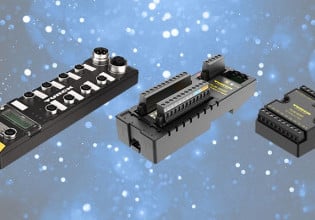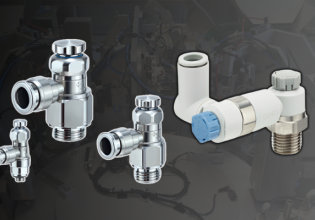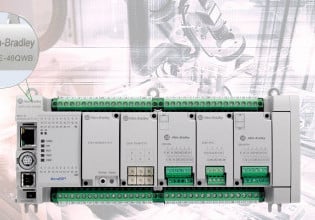MassRobotics and Lattice Semiconductor Aim to Accelerate FPGAs in Robotics
Robotics incubator MassRobotics and FPGA-leader Lattice Semiconductor join forces to advance the development of new-age robotics applications.
MassRobotics is an independent not-for-profit organization that serves as an incubator for innovative start-ups, focusing their efforts on robotics technologies. The innovation center supports more than 400 robotics companies, around 40 strategic partners, and 65 resident startups. MassRobotics and Lattice Semiconductor Corporation announced a partnership October 4 to promote the development of next-generation robotics applications across startup, innovation, and worldwide robotics ecosystems using FPGAs.

Image used courtesy of Robotiq
Why Field-programmable Gate Arrays and Robotics?
Field-programmable Gate Arrays (FPGAs) are reprogrammable integrated circuits composed of internal hardware blocks that are user-configurable and connected through programmable interconnects. FPGAs are advantageous in industrial applications because they can be customized to meet the needs of a specific design without having to redesign the entire system.

Lattice Semiconductor is a U.S.-based semiconductor company that specializes in the design, development, and sale of programmable logic devices. The company focuses on creating low-power FPGAs and has been active developing what they call solution stacks that include hardware, IP cores, and reference designs, specifically for industrial automation, embedded vision, and machine learning and artificial intelligence (ML/AI). The solution stacks provide a foundation for system developers so that they don't have to start new projects from scratch. Lattice has boards and reference designs for standard industrial applications including motor control, predictive maintenance, human presence detection, real-time industrial networking, industrial image sensing.

Lattice Semiconductor solutions stack for industrial automation. Image used courtesy of Lattice Semiconductor
Lattice’s FPGAs have been designed to offer a small footprint and provide in-field updates so designers can speed up time-to-market and extend the lifetime of their systems. Due to the low-latency nature of FPGAs, developers and engineers use them for time-critical applications where important measurements are needed quickly (such as medical devices or software-defined radio).
The low-latency nature of FPGAs comes from the capacity to process data in parallel. Where graphics processing units and central processing units process one batch of data/information at a time, FPGAs can do so simultaneously. Lattice’s FPGAs are tailored to engineers and developers for edge application design, whether this is for automotive, communications, computing, industrial, or consumer sectors.
FPGAs have been used in the past as an alternative to central processing units (CPUs) and microprocessors (MPUs). They were first developed in the 1980s and were used to develop the first generation of FPGA-based computers.
Our Control Automation engineering team reached out to Lattice to learn more about the specific advantages of FPGAs, since the internal composition of controllers is a bit more mysterious for many engineers.
Mark Hoopes, the Director of Industrial & Automotive at Lattice Semiconductor shared his unique input about the challenges and the best target applications for FPGA solutions.
Implementing lower-power smart vision in industrial systems can be a daunting challenge, but a broad range of silicon, software, and tools are available to assist with the task. Traditional CPUs and GPUs work well in unconstrained spaces where power and compact solutions aren’t a major factor. FPGAs enable a broad range of highly efficient processing and flexibility at the system level to accommodate rapidly changing requirements, making them ideal for implementing low-power Industrial Vision systems. FPGAs scale from the lowest power / highest efficiency all the way to many TOPs, but dedicated SoCs with high-end GPUs and/or NPUs are often chosen for applications demanding very high TOPs especially if overall power and latency requirements are not a primary focus.
FPGAs offer flexibility to build and tune new optimized networks for edge inferencing. In addition, we provide the ability to develop with the same familiar SW tool flow commonly used by the industry for tuning AI for the application, and then we provide tools to compile the inference network onto our FPGA devices, offering maximal flexibility, low power, and rapid development.
Generally, lower power, lower latency, and deterministic performance, along with flexibility are the key factors driving adoption of FPGAs for Edge AI/ML. Often there are also other system level benefits that FPGAs offer beyond the AI/ML capabilities, and Lattice, in particular, offers an optimized portfolio of low-power and small packages to meet system level needs.
MassRobotics Winter Challenge
For MassRobotics, the combination of its partner network and expertise with Lattice’s technology is expected to enable a new wave of innovation within the existing robotics ecosystem. As one part of their efforts, later in 2022 MassRobotics plans to announce the start of its MassRobotics winter challenge. The challenge is a call for university students to design, develop, and build truly innovative and functional robotics technology. The robotics community will have a chance to push the boundaries of what is possible and highlight key robotics innovation use cases.

MassRobotics and Lattice Semiconductor partner for next-generation robotics innovations. Image used courtesy of MassRobotics
Nowadays, robots are used for assembly, painting, welding, and other processes. Manufacturers have been using robots for tasks that are dangerous or difficult to do for humans. Robots can also work for longer hours without getting tired. This makes them more efficient than humans in these types of tasks.
Another example of robotics in industry is in electronics production, where robots can be used to assemble circuit boards or handle dangerous chemicals. The benefits of using robots include increased productivity and reduced risk of injury to human workers from hazardous materials or tasks involving soldering irons or high-voltage power lines that could cause electrocution.
The partnership between Lattice Semiconductor and MassRobotics is just one of many intiatives looking to continue acceleration of the robotics revolution.
Feature image used courtesy of Lattice Semiconductor






